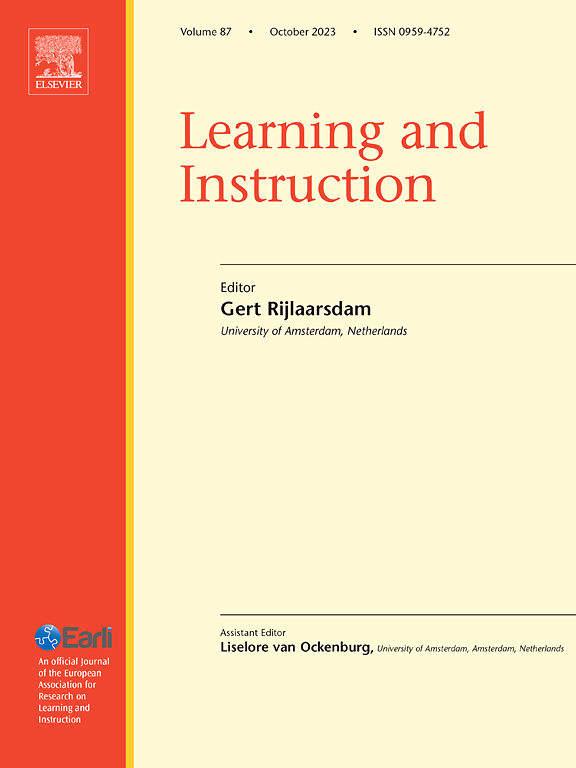支持青年男女对游泳和比赛的兴趣
IF 4.9
1区 教育学
Q1 EDUCATION & EDUCATIONAL RESEARCH
引用次数: 0
摘要
背景:随着时间的推移,青年能够与新内容(如游泳和/或竞赛)建立联系并继续培养兴趣的资源范围,以及这些资源与他们学习建设性竞争的关系,以及所需的支持是针对个人的,还是针对群体的(例如,按性别划分),这些都知之甚少。对22名(男8名,女14名)三级大学游泳运动员进行了研究。方法采用回顾性访谈和简短的在线调查来探索可能在进一步研究中检验的变量:(a)游泳者对游泳的兴趣的开始和持续以及竞争能力的发展,(b)获得的支持,以及(c)兴趣的波动(例如,倦怠)。结果采用定性分析。在参与者中确定了四个不同的青年群体,指出了四种兴趣发展的途径,这些途径因性别和参与者对竞争的兴趣程度而有所不同。每个小组需要的支持类型各不相同,他们互动的重点也各不相同,他们利用的资源也各不相同,以参与竞争和管理倦怠。最初,年轻人对游泳产生了兴趣。随着参与者开始关注与团队相关的技能发展,他们对竞争的兴趣也随之发展。对每位游泳运动员的有效支持与四种兴趣途径中的一种保持一致,这些兴趣途径根据性别和他们对游泳和比赛的兴趣重点来区分。随着兴趣的发展,参与者承担了管理参与的责任。本文章由计算机程序翻译,如有差异,请以英文原文为准。
Supports for young males' and females’ interest in swimming and competition
Background
Little is known about the range of resources that together enable youth to make connections to and continue to develop their interest in new content such as swimming and/or competition over time, its relation to their learning to compete constructively, and whether needed support is specific to individuals, or to groups, for example, by gender.
Sample
A cohort of 22 (8 males, 14 females) Division III collegiate swimmers was studied.
Methods
Retrospective interviews and a short online survey were used to explore variables that might be examined in further study: (a) the onset and continuation of swimmers’ interests in swimming and developing capacities to compete, (b) support received, and (c) fluctuation(s) in interest (e.g., burnout).
Results
Qualitative analyses were employed. Four distinct groups of youth were identified among participants, pointing to four pathways for interest development that were distinguished by gender, as well as participants’ level of interest in competition. The types of support that were needed by each of the groups varied, as did the focus of their interactions, and the resources on which they drew to engage competition and manage burnout.
Conclusions
Initially youth developed an interest in swimming. As participants began to focus on their skill development in relation to the team, their interest in competition developed. Effective supports for each swimmer were aligned with one of four interest pathways distinguished by gender and the focus of their interest in swimming and competition. As their interest developed, participants assumed responsibility for managing their engagement.
求助全文
通过发布文献求助,成功后即可免费获取论文全文。
去求助
来源期刊

Learning and Instruction
Multiple-
CiteScore
11.30
自引率
4.80%
发文量
109
期刊介绍:
As an international, multi-disciplinary, peer-refereed journal, Learning and Instruction provides a platform for the publication of the most advanced scientific research in the areas of learning, development, instruction and teaching. The journal welcomes original empirical investigations. The papers may represent a variety of theoretical perspectives and different methodological approaches. They may refer to any age level, from infants to adults and to a diversity of learning and instructional settings, from laboratory experiments to field studies. The major criteria in the review and the selection process concern the significance of the contribution to the area of learning and instruction, and the rigor of the study.
 求助内容:
求助内容: 应助结果提醒方式:
应助结果提醒方式:


